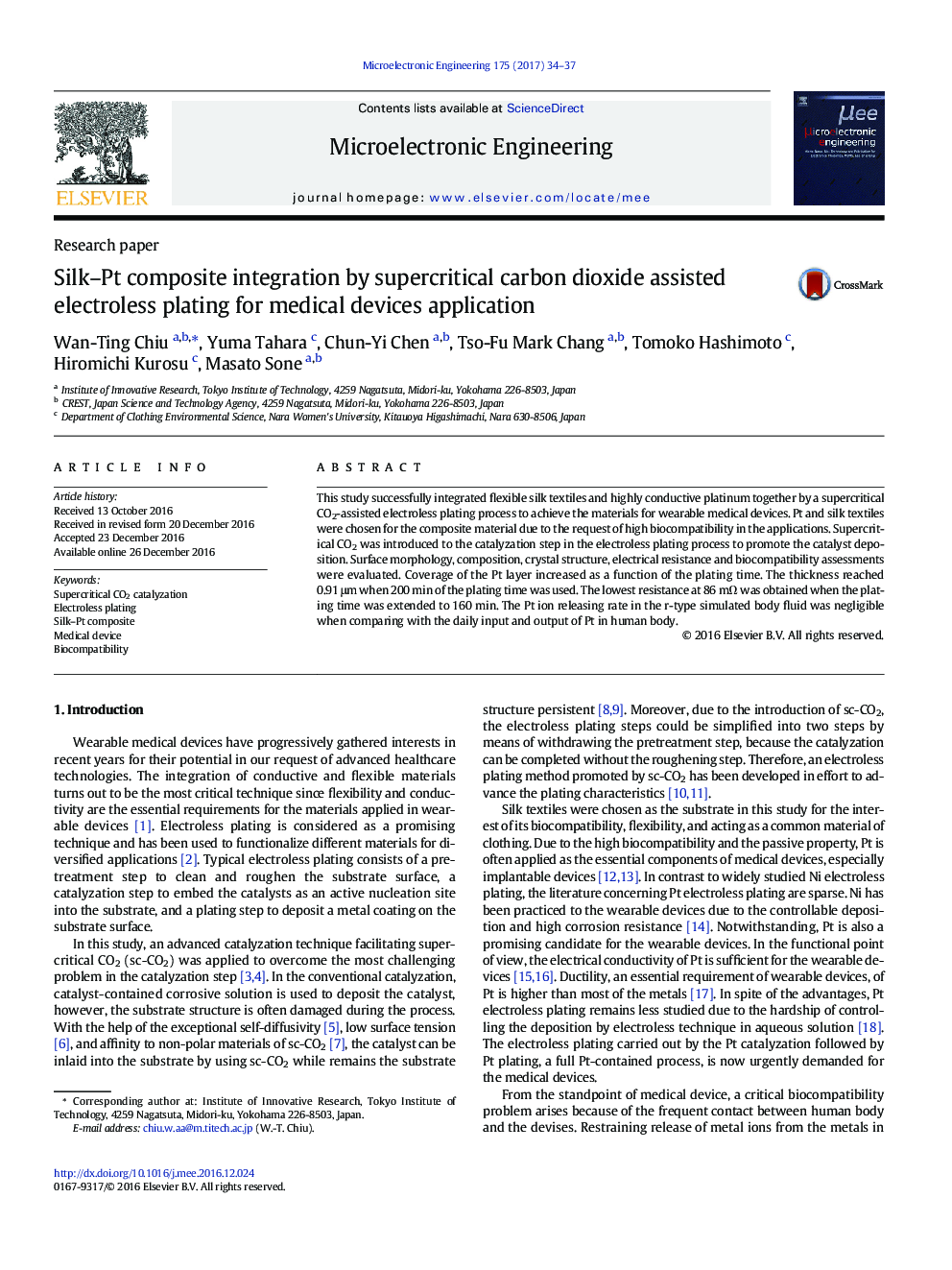| Article ID | Journal | Published Year | Pages | File Type |
|---|---|---|---|---|
| 4971001 | Microelectronic Engineering | 2017 | 4 Pages |
â¢Full Pt-contained metallization on silk process was successfully conducted.â¢Silk can be successfully activated by supercritical CO2 assisted catalyzation.â¢Pure Pt metallization layer thickness and coverage increase with the plating time.â¢Lowest electrical resistance was achieved at 86 mΩ at 160 min plating time.â¢Ion releasing measurements show the applicability to wearable and medical devices.
This study successfully integrated flexible silk textiles and highly conductive platinum together by a supercritical CO2-assisted electroless plating process to achieve the materials for wearable medical devices. Pt and silk textiles were chosen for the composite material due to the request of high biocompatibility in the applications. Supercritical CO2 was introduced to the catalyzation step in the electroless plating process to promote the catalyst deposition. Surface morphology, composition, crystal structure, electrical resistance and biocompatibility assessments were evaluated. Coverage of the Pt layer increased as a function of the plating time. The thickness reached 0.91 μm when 200 min of the plating time was used. The lowest resistance at 86 mΩ was obtained when the plating time was extended to 160 min. The Pt ion releasing rate in the r-type simulated body fluid was negligible when comparing with the daily input and output of Pt in human body.
Graphical abstractDownload high-res image (533KB)Download full-size image
